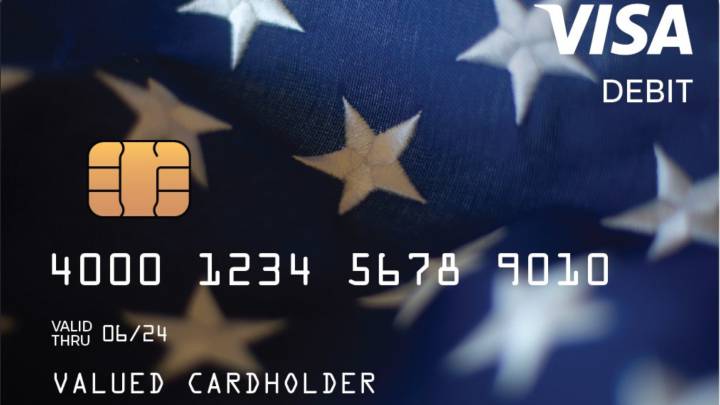
Economic impact payments, or stimulus checks, were authorized by the Coronavirus Aid, Relief, and Economic Security Act, or CARES Act, in early 2020.
Wondering the way to manage these economic impact payment cards, avoid fees and obtain your cash? Here are answers to common questions, including:
- What are economic impact payment cards?
- Will I receive an EIP card?
- What does the EIP card look like?
- How do i exploit my economic impact payment card?
- What fees will I pay when using the EIP card?
- What if I accidentally throw away my EIP card?
- Will using the EIP card impact my credit score?
- Read on for more information on receiving your stimulus check via open-end credit .
What Are Economic Impact Payment Cards?
EIP cards are Visa-branded debit cards issued by the govt and stocked your stimulus check money. Starting the week of May 18, eligible recipients began receiving EIP cards within the mail.
Will I Receive an EIP Card?
Nearly 4 million Americans are slated to receive EIP cards. you’ll be one among them if you qualify for an economic impact payment and didn’t yet receive your stimulus payment as an immediate deposit.
“Taxpayers receive EIP Cards because they’re eligible for an EIP, but the IRS didn’t have their checking account information and since their income tax return was processed by either the Andover (Massachusetts) or Austin (Texas) IRS Service Center,” wrote Sarah Shannonhouse, manager for tax practice and ethics at the Association of International Certified Professional Accountants, in an email.
In general, Americans who qualify for a stimulus check are taxpayers earning an adjusted gross income of but $99,000 if single or $198,000 if married filing jointly. the complete $1,200 per taxpayer is out there to single filers earning but $75,000 and married filers earning but $150,000. a further $500 is out there for taxpayers with children under age 17.
What Does the EIP Card Look Like?
Your economic impact payment prepaid open-end credit resembles a daily open-end credit . It bears the words “Visa” and “debit” on the front and therefore the issuing bank, which is MetaBank, N.A., on the rear .
Take note: The EIP card will arrive during a plain envelope from Money Network Cardholder Services. So review your mail carefully to make sure you do not toss it within the trash.
How Do i exploit My Economic Impact Payment Card?
You’ll need to activate your card by visiting EIPCard.com or calling 1-800-240-8100. You’ll provide your name, address and Social Security number and make a four-digit number . You’ll also got to sign the rear of your card.
Recipients can use the EIP card very similar to they might a daily open-end credit , swiping it in stores, online or over the phone.
If you would like to receive cash from your card, you’ll do so without paying a fee. Those methods include:
- Using an in-network ATM to withdraw cash.
- Using the cash-back feature at the register .
- Requesting a Money Network check and cashing it.
- Transferring money from your card to your personal checking account .
- For in-network ATM and check-cashing locations, attend EIPCard.com. You’ll also find instructions for initiating a cash transfer at that site.
Recipients also can request a check by calling customer service at 1-800-240-8100.
Additionally, you’ll pay regular bills together with your card. “EIP Cards are often used for recurring bill payments. However, (if) there are insufficient funds to pay the entire bill, then payments could also be declined or partially authorized,” Shannonhouse says.
What Fees Will I Pay When Using the EIP Card?
Your EIP card may levy card fees, counting on the sort of transaction you initiate. Be wary of those pesky EIP Card fees:
| ACTION | FEE |
| Out-of-network ATM withdrawal | $2 after the first withdrawal |
| International ATM withdrawal | $3 |
| Bank teller cash withdrawal (domestic and international) | $5 after the first withdrawal |
| ATM balance inquiry (domestic and international) | 25 cents |
| Lost or stolen card (waived for first reissued card) | $7.50 |
| Priority shipping | $17 |
Your bank can also charge its own fees, so note of any charges it’s going to levy. For more information on fees, visit the EIP card website.
What if I Accidentally Throw Away My EIP Card?
Nobody would blame you for accidentally tossing the plain envelope during which the cardboard arrives. If your card is lost or stolen, go online to EIPCard.com and lock your account. Then call customer service at 1-800-240-8100 to request a replacement card. The $7.50 fee will apply to reissues after the primary , and you will pay an additional $17 for priority shipping. Regular shipping takes seven to 10 business days. Priority shipping takes four to seven business days after the order is placed.
Will Using the EIP Card Impact My Credit Score?
Since the EIP card isn’t a mastercard , it’ll not impact your credit score.
Bottom line: If you’re one among the recipients of the EIP card, keep tabs on your plastic and use it carefully to avoid fees. Additionally, keep an eye fixed out for fraudsters. Scammers may impersonate the IRS through calls, emails and text messages in plan to steal your identity or your money.











